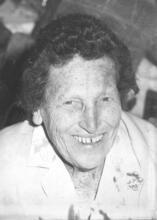Lillian R. Lieber
Frustrated with the way math is taught in schools, Lillian R. Lieber created unconventional, popular books to excite young readers and incite their curiosity. Lieber studied at Barnard and Columbia before earning her PhD from Clark University in 1914. From 1917 to 1918 she led the physics department at Wells College in Aurora, New York, and taught at various schools before joining the math department at Long Island University in 1934. Her husband, Hugh Gray Lieber, was chair of the math department, but when he moved to chair the art department, Lillian Lieber succeeded him as math department chair from 1945 until her retirement in 1954. Beginning in 1931, she began creating books written in free verse, illustrated by her husband, that explained concepts like non-Euclidean geometry, lattice theory, and Einstein’s theory of relativity in an approachable but mathematically rigorous way, a precursor to Stephen Hawking’s Brief History of Time. Lieber’s books engaged readers and encouraged them to question long-held assumptions as a path to discovery and innovation.
Article
Lillian R. Lieber devoted her professional life to introducing modern mathematics to young people and to making them aware of the political and ethical implications of science and mathematics. In her books and lectures, she noted that although as much mathematics was created since 1800 as in the period from the origin of mathematics until 1800, students were not taught any of the modern mathematics until they reached college. She believed that in order to get students excited about mathematics, it was essential to teach the revolutionary aspects of such fields as Galois theory of groups, non-Euclidean geometry, and modern logic. In a series of books, each devoted to a single branch of mathematics or physics, she treated these subjects as well as lattice theory, the theory of infinities, and Einstein’s theory of relativity.
Her books, illustrated with whimsical drawings by her husband, Hugh Gray Lieber, were characterized by their free verse style. Each phrase began on a new line to facilitate understanding of the mathematics. However, the mathematics was not oversimplified. For example, her book on lattice theory, a branch of abstract algebra, included enough mathematics to allow an explanation of unsolved research problems.
Of equal importance to Lieber was the message or, as she called it, the “moral” of her presentation of mathematics. The postulates of a mathematical field are not self-evident objective truths but are constructions of the human mind that can help us understand different aspects of the world. Non-Euclidean geometry arose when mathematicians questioned the logical necessity of the seemingly obvious postulate that given a line and a point not on that line, one and only one straight line can be drawn through that point parallel to the given line. Lieber argued that questioning old ideas and openness to new ones were central to science and art as well to as mathematics. She believed that science, art, and mathematics (or SAM as she referred to them) are the cornerstones of human culture. She called those intolerant of new ideas in these fields “anti-SAMites.” Anti-SAMites were indifferent to “the good, the true, and the beautiful,” and there was a clear implication that anti-SAMites were responsible for prejudice and war. To Lieber, war was the greatest danger facing humanity, and SAM our greatest hope against its destructive forces.
Lillian Rosanoff Lieber, the youngest of four children of Abraham H. and Clara (Bercinskaya) Rosanoff, was born in Nicolaiev, Russia, on July 26, 1886, and came to the United States in 1891. Her brothers were Denver publisher Joseph Rosenberg, psychiatrist Aaron Rosanoff, and chemist Martin André Rosanoff.
She received her B.A. degree from Barnard College in 1908, her M.A. from Columbia University in 1911, and her Ph.D. from Clark University in 1914. From 1917 to 1918 she was the head of the physics department at Wells College in Aurora, New York. She taught at the Connecticut College for Women from 1918 to 1920, and joined the mathematics department of Long Island University in 1934. At the time she was hired, Hugh Gray Lieber, whom she had married on October 27, 1926, was head of the department. In 1945, he became chair of the art department and she succeeded him as chair of the mathematics department. She became a full professor in 1947 and remained at Long Island University until her retirement in 1954.
Lillian R. Lieber died in Queens, New York, on July 11, 1986, less than a month from her hundredth birthday.
Selected Works by Lillian R. Lieber [All With Hugh Gray Lieber]
The Education of T.C. Mits (1944).
The Einstein Theory of Relativity (1945).
Galois and the Theory of Groups (1932).
Infinity (1953).
Lattice Theory: The Atomic Age in Mathematics (1959).
Mits, Wits, and Logic. 3d ed. (1960).
Non-Euclidean Geometry; or, Three Moons in Mathesis (1940).
Take a Number (1946).
WWIAJ (1938).
WWWIA 7.














